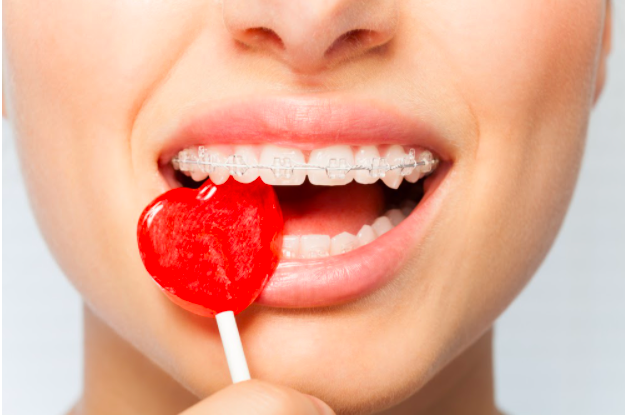Once upon a time, in a far distant land, the only solution to correcting misaligned teeth was traditional metal braces. Fast forward to 2021 and the options have essentially quadrupled, with a vast array of different orthodontic treatments now available for both children and adults. Two of the most popular options today are traditional metal braces and clear braces (not to be confused with clear aligners!). If you are considering orthodontic treatment, you may be wondering which of the two options to pick. Well, today we’re here to answer all your questions so sit back, relax and read on to find out more!
The Invisibility Factor
Of the two options, clear braces offer a more distinct orthodontic treatment when compared to traditional metal braces. Clear braces are made with brackets of porcelain or ceramic that are either entirely clear or matched to the colour of your teeth. There has been a steep increase in the popularity of clear braces in the UK, Australia and USA over the last decade, especially amongst adults due to this factor. Traditional metal braces on the other hand, are much more obvious when you smile, talk and eat. Those with lighter or minimally stained teeth do just fine with clear brackets, but do keep in mind that if your teeth are on the darker side or stained, traditional metal braces may be a better option for you. At the end of the day, whether the “invisibility factor” matters to you is simply a matter of personal preference.
Which One Costs More?
Without a doubt, clear braces almost always cost more than traditional braces due to the materials used to construct your brackets. You can expect to be forking out an additional $1000 or so for clear braces, which is something to keep in mind if you are trying to stick to a particular budget. Thus, those who are looking to save precious pennies on their orthodontic treatment are much better suited to traditional metal braces.
Let’s Talk About Durability
In terms of durability, traditional metal braces are by far superior to clear braces. If you are someone who is incredibly active and plays sports on a regular basis, metal braces may be the best option for you. Don’t get us wrong though — while ceramic braces are made to be as durable and tough as possible, they are made from an entirely different material and may chip or crack upon strong impact such as a fall that will result in costly repairs.
Oral Hygiene
Both metal and ceramic braces will require you to adopt a healthy oral hygiene routine in order to prevent cavities and tooth decay that may be caused by food particles that are trapped in your brackets. Regardless of whether you choose traditional metal braces or clear braces, cleaning can be something that is challenging.
Ceramic braces in particular have larger brackets than their metal counterpart, making it that much more difficult to clean. Improper cleaning can also lead to swollen or receding gums that are both uncomfortable and detrimental to your overall oral health. Because clear braces are more fragile, there is also a higher risk of damage to tooth enamel during the debonding process. Furthermore, clear braces are also prone to staining if you consume heavily pigmented food and drink such as berries, coffee, tea and wine.
Comfort Considerations
In terms of comfort, clear braces win as they are lighter than their metal counterparts. The materials used to make clear braces are also less abrasive and thus lower the risks of irritating the sides of your mouth and gums which is a common complaint that we hear from traditional metal brace wearers.
So, Which One Should I Choose?
As you can see, both metal and clear braces come with their own set of pros and cons. Both types of oral devices correct orthodontic issues incredibly effectively but it is important to note that metal braces may be more appropriate if you have a serious or complex orthodontic issue. Clear braces are a great option for those who are looking for discrete treatment although they may take slightly longer to work. Which one you choose will be highly dependent on your level of misalignment and of course, personal preference. In order to make the most informed decision, we highly recommend booking a consultation with your local orthodontist who will be able to guide you towards the best option for your individual circumstances.

